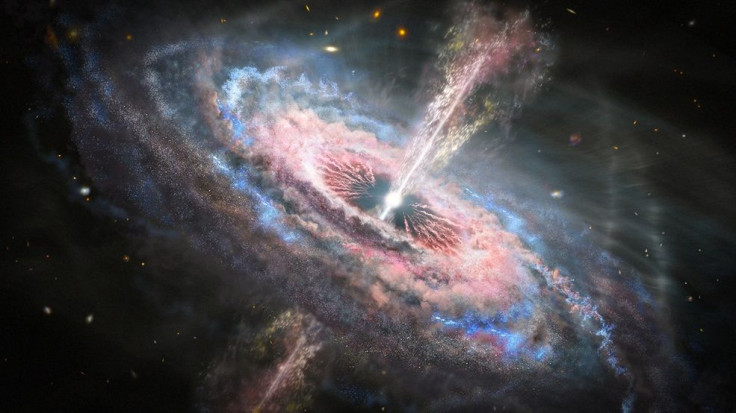Quasars Produce Tsunami-Like Blasts That Rip Across Galaxies, Scientists Reveal

KEY POINTS
- Quasars form at the center of galaxies around supermassive black holes
- Radiation from black holes can produce powerful quasar winds
- Quasar winds can cause a galaxy's star-forming process to stop
A team of astronomers learned how the powerful outbursts of quasars can affect their host galaxies. According to their study, the cosmic tsunamis produced by quasars are enough to stop the formation of new stars in a galaxy.
A quasar is a luminous galactic nucleus that hosts a supermassive black hole. As the black hole continues to feed on matter falling into its center, it can shine by up to 1,000 times brighter than its host galaxy.
According to a new study, which was published in The Astrophysical Journal, quasars are created by the hot cloud of gas that forms around supermassive black holes as they devour matter. These clouds can emit exceptionally large amounts of radiation, leading to the creation of quasars.
Due to the winds produced by the intense radiation from the supermassive black hole, cosmic material from the surrounding cloud gets pushed away from the galaxy’s center. This results in a powerful outburst that’s regarded as one of the most energetic outflows ever witnessed in the universe.
"No other phenomena carries more mechanical energy. Over the lifetime of 10 million years, these outflows produce a million times more energy than a gamma-ray burst,” astronomer Nahum Arav of Virginia Tech in Blacksburg, Virginia, said in a statement.
“The winds are pushing hundreds of solar masses of material each year,” he added. “The amount of mechanical energy that these outflows carry is up to several hundreds of times higher than the luminosity of the entire Milky Way galaxy.”
Arav and his team were able to observe quasars using NASA’s Hubble Space Telescope. Through their observations, they saw how the winds of quasars rip across their host galaxies like powerful cosmic tsunamis, disrupting everything in their paths.
As the cosmic tsunamis plow across the galaxy, it collides and pushes away the various interstellar materials. These include gas and dust that are essential to the birth of new stars. Due to the powerful presence of the quasar winds, the star-forming process of galaxies could cease completely.
“The quasar winds snowplow across the galaxy's disk,” NASA explained. “Material that otherwise would have formed new stars is violently swept from the galaxy, causing star birth to cease. Radiation pushes the gas and dust to far greater distances than scientists previously thought, creating a galaxy-wide event.”
© Copyright IBTimes 2024. All rights reserved.





















